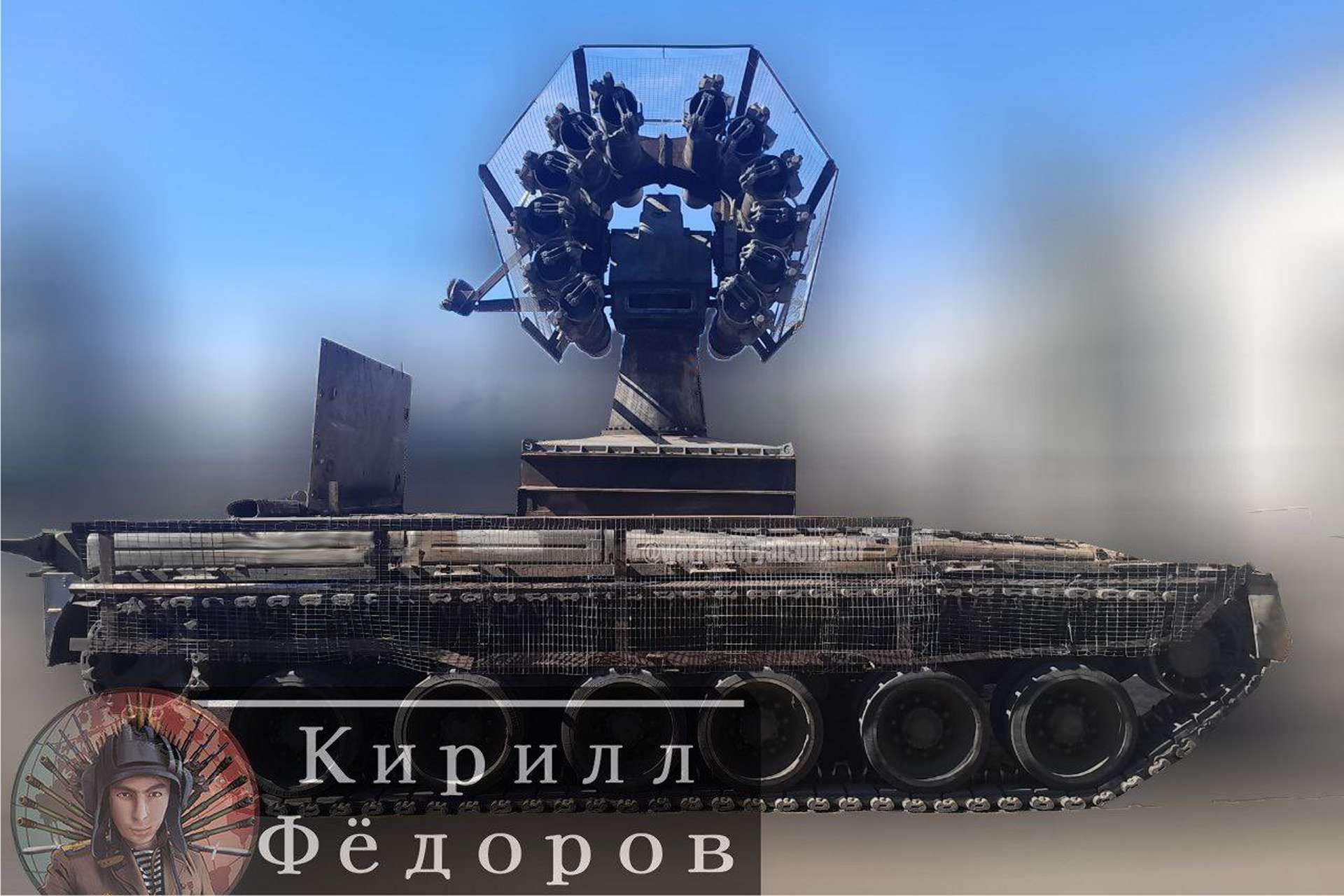Breaking News
Hybrid Monster Emerges in Ukraine: Russian T-80 Tank Armed with Naval Rocket Launcher RBU-6000.
A new hybrid war vehicle has appeared on the Ukrainian battlefields. It is a T-80 tank, equipped with an RBU-6000 anti-submarine rocket launcher, a weapon previously used exclusively in naval warfare. This transformation may symbolize a search for innovative if not desperate, solutions in response to the growing demand for artillery in the context of the conflict.
Follow Army Recognition on Google News at this link

A T-80 tank equipped with an RBU-6000 anti-submarine rocket launcher in Ukraine. (Picture source: Social Media)
The RBU-6000, developed in the 1960s for the Soviet naval forces, was designed for anti-submarine warfare. Equipped with twelve fan-shaped launching tubes, it can fire RGB-60 rockets. These projectiles, weighing 113 kg each, were initially intended to destroy submarines or torpedoes at depth. The range of these munitions reaches about 5.2 kilometers, with a firing rate of one rocket every 2.4 seconds.
An Improbable Transformation
The T-80 tank is a robust armored vehicle, valued for its mobility and versatility. However, the integration of an anti-submarine rocket launcher raises questions about its effectiveness in an artillery role on land. The RBU-6000 system, due to its weight, significantly overloads the structure of the tank, which was originally designed to carry lighter weapons specific to ground warfare. This means the vehicle must operate under carefully controlled conditions to avoid mechanical failure.
One of the main challenges associated with this adaptation is the manual reloading of rockets. Unlike naval systems, where munitions can be loaded automatically from storage cells below deck, the T-80 lacks the space or technology necessary for automated reloading. Each rocket must therefore be repositioned by hand, which not only slows the rate of fire but also exposes soldiers to increased danger on the battlefield.
An Experimental Use
This combination of the T-80 and the RBU-6000 was observed for the first time in action during the conflict in Ukraine, although precise information on its effectiveness remains scarce. The system appears to have been used for short-range saturation fire, aiming to cover large areas without specific targeting. This results in fairly indiscriminate fire coverage, similar to that of multiple artillery systems like the BM-21 Grad, though the range of the RBU-6000 is more limited.
The absence of sophisticated fire control systems, such as the Burya system used on ships, further reduces the precision of this weapon when mounted on a land-based tank. Firing is done primarily manually, relying on rudimentary ballistic calculation methods, which compromises the ability to accurately target moving or hidden objects.
A Tool of War or a Makeshift Solution?
This adaptation of the RBU-6000 rocket launcher on the T-80 can be perceived in several ways. On the one hand, it reflects a form of innovation in a war context where the need for heavy artillery is pressing. The lack of adequate equipment sometimes forces armed forces to cobble together solutions with available resources, repurposing weapons designed for entirely different contexts.
On the other hand, this transformation also highlights some of the logistical weaknesses faced by the Russian army. While ground forces are under intense pressure, naval systems like the RBU-6000 are being modified for land use, despite the technical and operational challenges this entails. Likely, this hybrid vehicle will not be deployed in large numbers; it is more of an isolated attempt at adaptation or even an experimental test.
Innovation in the Service of Necessity
The T-80 tank, equipped with the RBU-6000, represents a bold attempt to combine naval and land technologies to compensate for artillery shortages. However, implementing this combination poses significant challenges, particularly in terms of accuracy, logistics, and reloading. The effectiveness of this hybrid weapon remains highly uncertain.
Nevertheless, this adaptation illustrates the complexity of modern warfare, where improvisation plays a crucial role in the evolution of military tactics and equipment.


























